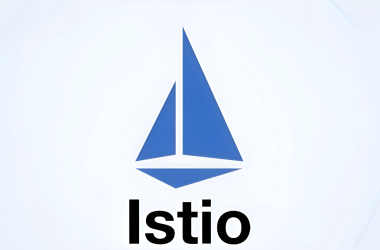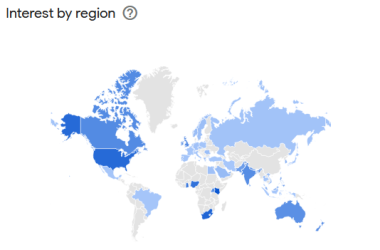Unraveling Data’s Journey: A Deep Dive into Google Cloud’s Data Lineage API
The modern data landscape is complex. Organizations are increasingly reliant on data-driven decisions, fueled by pipelines that ingest, transform, and analyze information from diverse sources. Maintaining trust in these decisions requires understanding where data comes from, how it’s changed, and who has accessed it. A recent data breach at a financial institution, traced back to an undocumented transformation in a data pipeline, resulted in a $100 million fine and significant reputational damage. Similarly, a leading retail company struggled to comply with GDPR regulations due to a lack of visibility into personal data flows. Companies like Spotify and Netflix leverage robust data lineage to ensure data quality, optimize pipelines, and maintain compliance. As sustainability becomes a core business value, understanding data movement and storage costs is also critical. With Google Cloud Platform (GCP) experiencing rapid growth and the increasing adoption of multicloud strategies, the need for a centralized, scalable data lineage solution is paramount.
What is Data Lineage API?
The Google Cloud Data Lineage API provides a programmatic way to discover and understand the relationships between data assets within your GCP environment. It’s a fully managed service that automatically captures lineage information from various GCP data processing services, offering a comprehensive view of data’s journey. Essentially, it answers the question: “What happened to this data?”
The API doesn’t store your data; it tracks the metadata about how data is processed. It identifies the sources, transformations, and destinations of data, creating a graph of dependencies. This graph allows you to trace data back to its origin, understand the impact of changes, and troubleshoot data quality issues.
Currently, the Data Lineage API is generally available and supports lineage information from BigQuery, Dataproc, Dataflow, and Cloud Composer. It integrates seamlessly into the broader GCP ecosystem, leveraging existing IAM permissions and Cloud Logging infrastructure. The API is built on a RESTful interface, making it accessible through various programming languages and tools.
Why Use Data Lineage API?
Traditional data lineage solutions often rely on manual documentation or complex, custom-built systems. These approaches are prone to errors, difficult to maintain, and struggle to scale with growing data volumes. The Data Lineage API addresses these pain points by automating lineage capture and providing a centralized, scalable solution.
Benefits:
- Improved Data Trust: Understand data origins and transformations to ensure data accuracy and reliability.
- Faster Root Cause Analysis: Quickly identify the source of data quality issues and resolve them efficiently.
- Enhanced Compliance: Demonstrate data governance and compliance with regulations like GDPR and CCPA.
- Optimized Data Pipelines: Identify bottlenecks and inefficiencies in data pipelines to improve performance and reduce costs.
- Reduced Risk: Minimize the impact of data breaches and errors by understanding data dependencies.
Use Cases:
- Data Quality Monitoring (Financial Services): A financial institution uses the API to track the lineage of key risk metrics. When a metric deviates from expected values, the API helps pinpoint the source of the error – a faulty transformation in a Dataproc job, for example – enabling rapid correction and preventing inaccurate reporting.
- Impact Analysis (E-commerce): An e-commerce company is planning to update a core data transformation logic in Dataflow. Using the API, they can identify all downstream reports and dashboards that rely on the affected data, allowing them to proactively communicate changes and minimize disruption.
- Data Governance (Healthcare): A healthcare provider uses the API to track the flow of Protected Health Information (PHI) across their GCP environment, ensuring compliance with HIPAA regulations and enabling efficient data access audits.
Key Features and Capabilities
- Automated Lineage Capture: Automatically discovers and captures lineage information without requiring manual configuration.
- RESTful API: Provides a programmatic interface for accessing lineage data.
- BigQuery Integration: Tracks lineage for BigQuery tables, views, and queries.
- Dataproc Integration: Captures lineage for Dataproc jobs and workflows.
- Dataflow Integration: Tracks lineage for Dataflow pipelines and transformations.
- Cloud Composer Integration: Captures lineage for Cloud Composer DAGs and tasks.
- Granular Lineage Information: Provides detailed information about data sources, transformations, and destinations.
- Data Asset Relationships: Identifies relationships between different data assets, such as tables, views, and jobs.
- Search and Filtering: Allows you to search and filter lineage data based on various criteria.
- Metadata Enrichment: Supports adding custom metadata to data assets to enhance lineage information.
- IAM Integration: Leverages existing IAM roles and permissions for secure access control.
- Cloud Logging Integration: Logs lineage events for auditing and monitoring purposes.
Detailed Practical Use Cases
-
DevOps – Pipeline Failure Investigation: A Dataflow pipeline fails. The DevOps engineer uses the Data Lineage API to trace the input data back to its source in BigQuery, identifying a corrupted data file as the root cause.
- Workflow: Pipeline failure -> API query for input data lineage -> Identify source BigQuery table -> Investigate data quality in BigQuery.
- Role: DevOps Engineer
- Benefit: Reduced Mean Time To Resolution (MTTR).
-
Code (Python):
from google.cloud import datal lineage_v1 client = datal lineage_v1.DataLineageServiceClient() request = datal lineage_v1.RunLineageRequest( parent="projects/your-project/locations/us-central1", input_dataset={"fully_qualified_name": "bq://your-project.your_dataset.your_table"} ) response = client.run_lineage(request=request) print(response)
-
Machine Learning – Feature Store Lineage: A data scientist needs to understand the origin of features used in a machine learning model. The API reveals the transformations applied to the raw data, ensuring feature consistency and reproducibility.
- Workflow: Model performance issue -> API query for feature lineage -> Identify data transformations -> Validate transformation logic.
- Role: Data Scientist
- Benefit: Improved model accuracy and reliability.
-
Data Engineering – Impact of Schema Changes: A data engineer is planning to change the schema of a BigQuery table. The API identifies all downstream Dataflow pipelines and Cloud Composer DAGs that depend on the table, allowing for coordinated updates.
- Workflow: Schema change planned -> API query for downstream dependencies -> Coordinate pipeline updates -> Validate data flow.
- Role: Data Engineer
- Benefit: Reduced risk of pipeline failures.
-
IoT – Sensor Data Tracking: An IoT platform uses the API to track the lineage of sensor data from ingestion to analysis, ensuring data integrity and enabling anomaly detection.
- Workflow: Sensor data ingested -> API tracks data flow through Dataflow -> Anomaly detected in BigQuery -> Trace lineage to identify faulty sensor.
- Role: IoT Engineer
- Benefit: Improved data quality and anomaly detection.
-
Marketing – Campaign Attribution: A marketing team uses the API to track the lineage of customer data used in campaign attribution models, ensuring accurate reporting and ROI analysis.
- Workflow: Campaign performance analysis -> API query for customer data lineage -> Validate data sources and transformations -> Accurate ROI calculation.
- Role: Marketing Analyst
- Benefit: Improved campaign performance and ROI.
-
Data Governance – Data Discovery and Classification: A data governance team uses the API to discover and classify sensitive data assets, ensuring compliance with data privacy regulations.
- Workflow: Data discovery process -> API identifies data assets and their lineage -> Classify data based on sensitivity -> Implement access controls.
- Role: Data Governance Officer
- Benefit: Enhanced data privacy and compliance.
Architecture and Ecosystem Integration
graph LR
A[Data Sources (Cloud Storage, APIs)] --> B(Dataflow);
B --> C(BigQuery);
C --> D(Looker Studio);
B --> E(Dataproc);
E --> C;
F[Cloud Composer] --> B;
G[Data Lineage API] --> B;
G --> C;
G --> E;
G --> F;
H[Cloud Logging] --> G;
I[IAM] --> G;
J[Pub/Sub] --> G;
style G fill:#f9f,stroke:#333,stroke-width:2px
The Data Lineage API acts as a central metadata repository, collecting lineage information from various GCP data processing services. It integrates with Cloud Logging for auditing and monitoring, IAM for secure access control, and potentially Pub/Sub for real-time lineage updates. VPC Service Controls can be used to further restrict access to the API.
gcloud CLI Example:
gcloud data-lineage run-lineage
--parent="projects/your-project/locations/us-central1"
--input-dataset='{"fully_qualified_name": "bq://your-project.your_dataset.your_table"}'
Terraform Example:
resource "google_data_lineage_run_lineage" "example" {
parent = "projects/your-project/locations/us-central1"
input_dataset {
fully_qualified_name = "bq://your-project.your_dataset.your_table"
}
}
Hands-On: Step-by-Step Tutorial
- Enable the API: In the Google Cloud Console, navigate to the Data Lineage API page and enable the API.
- Grant Permissions: Ensure your user account or service account has the
datalineage.lineageReaderrole. - Run a Lineage Query (Console): Navigate to the Data Lineage section in the console. Enter the fully qualified name of a BigQuery table and click “Run Lineage”.
- Run a Lineage Query (gcloud): Use the
gcloud data-lineage run-lineagecommand (see example above). - Troubleshooting:
- Permission Denied: Verify your IAM permissions.
- Invalid Input: Double-check the fully qualified name of the data asset.
- No Lineage Found: The API may not yet have captured lineage for the asset. Lineage capture is not instantaneous.
Pricing Deep Dive
The Data Lineage API pricing is based on the number of lineage operations performed. A lineage operation is defined as a request to the RunLineage method. As of October 26, 2023, pricing starts at $0.01 per 1,000 lineage operations. There are no additional charges for storage or data transfer.
Tier Descriptions:
| Tier | Price per 1,000 Operations |
|---|---|
| Standard | $0.01 |
| Higher Volume (Contact Sales) | Negotiated |
Cost Optimization:
- Batch Lineage Queries: Combine multiple lineage queries into a single request to reduce the number of operations.
- Caching: Cache lineage results to avoid redundant queries.
- Monitor Usage: Use Cloud Monitoring to track API usage and identify potential cost savings.
Security, Compliance, and Governance
The Data Lineage API leverages GCP’s robust security infrastructure. Access to the API is controlled through IAM roles and permissions. Service accounts should be used for automated access.
IAM Roles:
-
datalineage.lineageReader: Allows viewing lineage information. -
datalineage.lineageAdmin: Allows managing lineage resources.
Certifications: GCP is compliant with numerous industry standards, including ISO 27001, SOC 2, FedRAMP, and HIPAA.
Governance Best Practices:
- Organization Policies: Use organization policies to restrict access to the API based on location or other criteria.
- Audit Logging: Enable Cloud Audit Logs to track all API calls.
- Data Masking: Mask sensitive data in lineage information to protect privacy.
Integration with Other GCP Services
- BigQuery: The core integration. Lineage is automatically captured for tables, views, and queries. Enables impact analysis and data quality monitoring.
- Cloud Run: If your data processing logic runs in Cloud Run, you can integrate with the API to capture lineage information from your custom applications.
- Pub/Sub: Use Pub/Sub to receive real-time lineage updates and trigger automated actions.
- Cloud Functions: Create Cloud Functions to process lineage events and integrate with other systems.
- Artifact Registry: Track the lineage of data processing code stored in Artifact Registry, ensuring reproducibility and version control.
Comparison with Other Services
| Feature | Google Cloud Data Lineage API | AWS Glue DataBrew | Azure Purview |
|---|---|---|---|
| Focus | Metadata tracking & lineage | Data preparation & profiling | Data governance & discovery |
| Integration | Deep GCP integration | AWS ecosystem | Azure ecosystem |
| Automation | High | Moderate | Moderate |
| Pricing | Pay-per-operation | Pay-per-session | Pay-per-capacity unit |
| Ease of Use | Relatively simple | Moderate | Complex |
| Scalability | Highly scalable | Scalable | Scalable |
When to Use Which:
- Data Lineage API: Best for organizations heavily invested in GCP and needing a scalable, automated lineage solution.
- AWS Glue DataBrew: Suitable for AWS users focused on data preparation and profiling.
- Azure Purview: Ideal for Azure users requiring a comprehensive data governance and discovery platform.
Common Mistakes and Misconceptions
- Lineage is Instantaneous: Lineage capture is not real-time. There may be a delay before lineage information is available.
- API Tracks Data Itself: The API tracks metadata about data, not the data itself.
- IAM Permissions are Not Configured: Forgetting to grant the necessary IAM permissions.
- Incorrect Fully Qualified Name: Using an incorrect fully qualified name for the data asset.
- Assuming Complete Coverage: The API currently supports lineage for a limited set of GCP services.
Pros and Cons Summary
Pros:
- Automated lineage capture
- Scalable and reliable
- Deep GCP integration
- Cost-effective pricing
- Improved data trust and compliance
Cons:
- Limited service coverage (currently)
- Lineage capture is not real-time
- Requires IAM configuration
Best Practices for Production Use
- Monitoring: Monitor API usage and error rates using Cloud Monitoring.
- Scaling: The API is designed to scale automatically, but consider caching lineage results to reduce load.
- Automation: Automate lineage queries and reporting using Cloud Functions or Cloud Composer.
- Security: Use service accounts with least privilege access.
- Alerting: Set up alerts for API errors or unexpected lineage changes.
Conclusion
The Google Cloud Data Lineage API is a powerful tool for understanding and managing data’s journey within your GCP environment. By automating lineage capture and providing a centralized metadata repository, it empowers organizations to improve data trust, enhance compliance, and optimize data pipelines. Explore the official documentation and try the hands-on labs to unlock the full potential of this valuable service: https://cloud.google.com/data-lineage.





